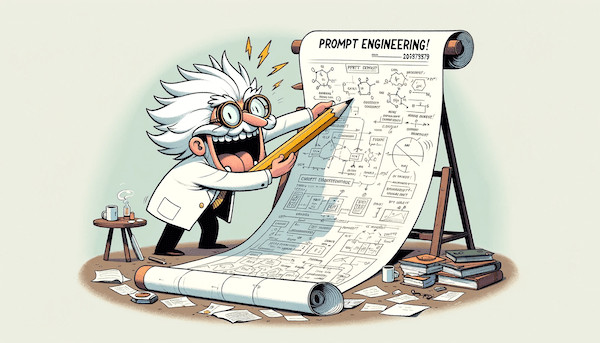- Published on
Unlocking the Power of Prompt Engineering for Claude and Other Frontier Models
- Authors

- Name
- Adil ABBADI
Introduction
The recent surge in advanced language models like Claude has brought about a new era of possibilities in natural language processing. These models boast impressive capabilities, from generating coherent text to answering complex questions. However, unlocking their full potential requires a deep understanding of prompt engineering. In this article, we'll delve into the world of prompt engineering, discussing its importance, techniques, and best practices for getting the most out of Claude and other frontier models.

- Understanding Prompt Engineering
- Crafting Effective Prompts
- 1. Specificity: Clearly define the task, audience, and tone to help the model understand the context and generate relevant responses.
- 2. Clarity: Use simple, concise language to avoid ambiguity and ensure the model understands the prompt.
- 3. Relevance: Ensure the prompt is relevant to the model's capabilities and the task at hand. This helps to elicit accurate and informative responses.
- Advanced Prompt Engineering Techniques
- 1. Prompt Chaining: Break down complex tasks into a series of smaller, interconnected prompts to facilitate more accurate and coherent responses.
- 2. Prompt Conditioning: Use pre-defined conditions or constraints to guide the model's responses and ensure they meet specific requirements.
- 3. Adversarial Prompting: Intentionally craft prompts to test the model's limitations and robustness, helping to identify areas for improvement.
- Conclusion
- Take Your Prompt Engineering Skills to the Next Level
Understanding Prompt Engineering
Prompt engineering is the process of designing and refining input prompts to elicit specific, accurate, and informative responses from language models. It's an iterative process that requires a deep understanding of the model's capabilities, limitations, and the task at hand. Effective prompt engineering can make or break the performance of advanced language models like Claude.
# Example of a simple prompt for Claude
prompt = "Write a short story about a character who learns to appreciate the beauty of nature."
Crafting Effective Prompts
Crafting effective prompts for Claude and other frontier models involves a combination of art and science. Here are some key considerations to keep in mind:
1. Specificity: Clearly define the task, audience, and tone to help the model understand the context and generate relevant responses.
# Example of a specific prompt for Claude
prompt = "Write a 300-word blog post on the benefits of meditation for students, using a conversational tone and including at least two scientific studies."
2. Clarity: Use simple, concise language to avoid ambiguity and ensure the model understands the prompt.
# Example of a clear prompt for Claude
prompt = "Summarize the main points of the article 'The Impact of Climate Change on Global Food Systems' in 100 words."
3. Relevance: Ensure the prompt is relevant to the model's capabilities and the task at hand. This helps to elicit accurate and informative responses.
# Example of a relevant prompt for Claude
prompt = "Generate a Python script to scrape weather data from a specific website and store it in a CSV file."
Advanced Prompt Engineering Techniques
As you delve deeper into prompt engineering, you'll discover advanced techniques to fine-tune your prompts and unlock the full potential of Claude and other frontier models.
1. Prompt Chaining: Break down complex tasks into a series of smaller, interconnected prompts to facilitate more accurate and coherent responses.
# Example of prompt chaining for Claude
prompt_1 = "Write a brief summary of the article 'The Future of AI in Healthcare'."
prompt_2 = "Based on the summary, identify the top three benefits of AI in healthcare."
prompt_3 = "Write a 200-word essay on the most significant benefit of AI in healthcare."
2. Prompt Conditioning: Use pre-defined conditions or constraints to guide the model's responses and ensure they meet specific requirements.
# Example of prompt conditioning for Claude
prompt = "Generate a product description for a new smartwatch, assuming it has a touchscreen display, GPS, and water resistance up to 50 meters."
3. Adversarial Prompting: Intentionally craft prompts to test the model's limitations and robustness, helping to identify areas for improvement.
# Example of adversarial prompting for Claude
prompt = "Write a short story about a character who discovers a hidden world within their own reflection. Include at least three contradictory statements."
Conclusion
Prompt engineering is a critical component in harnessing the potential of advanced language models like Claude. By mastering the techniques and best practices outlined in this article, you'll be able to craft effective prompts that unlock the full capabilities of these frontier models. Remember, prompt engineering is an iterative process that requires patience, creativity, and a deep understanding of the model's capabilities and limitations.
Take Your Prompt Engineering Skills to the Next Level
Start experimenting with Claude and other frontier models today. Share your experiences, tips, and techniques with the community, and continue to push the boundaries of what's possible with prompt engineering.
